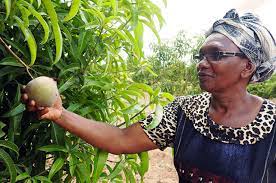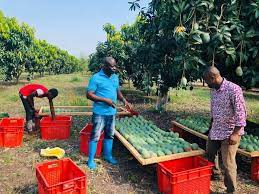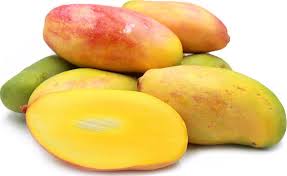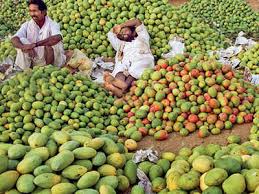HOW TO START A MANGO FARM OPERATION NOW?



Mangoes are grown over a wide area in South Africa. However, the main production areas are in the Northern Province with Tzaneen, Hoedspruit, Phalaborwa, Letsitele and Trichardsdal area accounting for 60% of the total production. Mango trees will grow and produce well in areas with very high temperatures (45 degrees C). However, when the maximum temperature exceeds 46 degrees C vegetative growth ceases, especially if it is accompanied by low humidity. In South Africa the average relative humidity should preferably be 55% or less, from October until the fruit is harvested.
SOIL REQUIREMENTS
Mango trees grow on a slight slope which enables runoff of excess water and prevents water-logging. Depressions or basins are poorly drained and plantings on these sites should be avoided. The roots will turn black and become desiccated in over-saturated soils as a result of a lack of aeration. Under such conditions the parts of the plant above the ground will wilt and show symptoms of chlorosis. Mango trees do not row and produce well in soils with impermeable layers and also do not thrive on very steep slopes because excessive drainage could lead to water shortages and soil erosion.
PLANTING PROCEDURE
Although mango orchards are planted throughout the year (especially in the warmer production regions) the best time is August to September after the risk of cold weather had passed. After proper soil preparation the holes for planting should be large enough for the bag containing the tree to fit inside. Cut the bags open before planting to ensure that the trees have well developed root systems and that the roots are undamaged. Irrigation systems should already be installed before planting the trees. As soon as active growth is observed after planting, each tree should receive 4 applications of 25g LAN at intervals of 6 weeks, i.e. a total of 100g for the first year.
HARVESTING
Local Market – If mango fruit is to be marketed locally, it can be allowed to mature for longer periods on the tree. This will give it a better color and flavor. However, if the fruit is left on the tree for too long, it will drop in a process known as spontaneous ripening.
Export – Only the best quality mangoes is suitable for export, as it has to undergo transport and cold storage for 28 days in order to reach foreign markets buy sea. Fruit packed too green will never ripen properly whereas overripe fruit will spoil as a result of softening and the development of various diseases. It is therefore important to start picking at the correct stage.
TREE SELECTION
When you’re buying mango trees, you’ll need to look for signs that the tree is in good health. Take a look at the signs of a quality tree:
– Green and gleaming foliage;
– Long inter-nodes;
– Healthy graft union and blossoms;
– Containers should be a minimum of 10L as a precaution against stunted root growth.
NEED TO KNOW MORE OR NEED A PROFESSIONAL, BANKABLE FARMING BUSINESS PLAN CALL US NOW AT: (27) 84 583 3143 or EMAIL: money@global.co.za


HOW TO START A MANGO FARM OPERATION NOW? Read More »